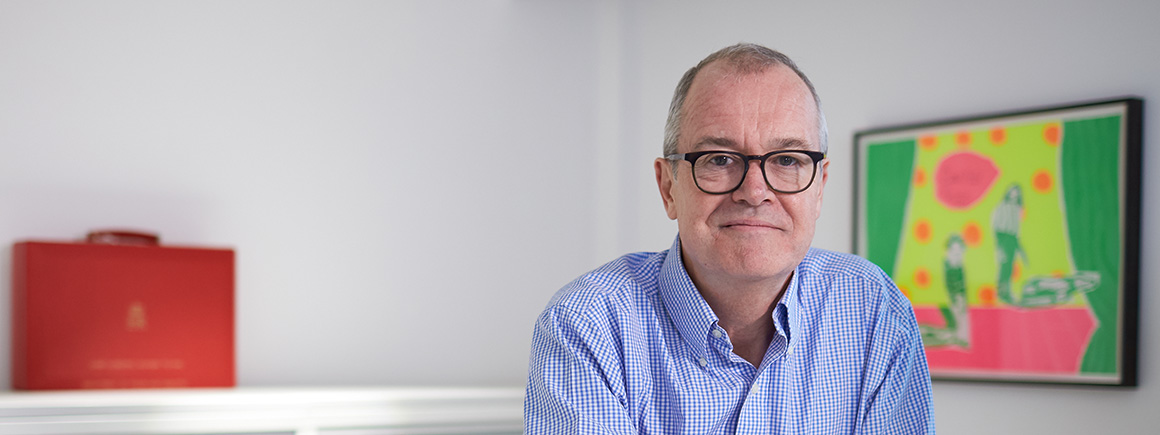The Trustees of the Natural History Museum are delighted to announce that Sir Patrick Vallance, the Government Chief Scientific Adviser, will be the successor to Lord Stephen Green as non-executive Chairman of the Board of Trustees of the Natural History Museum.

Sir Patrick expects to join the Board in October 2022 and to take over as Chair early in 2023.
Sir Patrick Vallance says: “I have loved the museum since first visiting as a young child. It inspired me to pursue a career in science and continues to inspire wonder in visitors of all ages as well as being a world leading scientific research institute. I am hugely looking forward to the opportunity to contribute to its continuing success.”
He brings a wealth of experience in industry, academia and scientific communication to the Museum. Amongst his many achievements is his leadership of the Government Office for Science, a role in which he has advised the Prime Minister and the cabinet on critical scientific matters – most notably around understanding the risks and mitigation of Covid-19 and prioritising vaccine development from the outset of the pandemic. He was Chief Scientific Adviser to COP26 and leads the Net Zero Innovation Board for Government.
Dr Douglas Gurr, Director of the Natural History Museum said “The Natural History Museum is well known as a much-loved visitor attraction but is also a world-leading scientific research centre working on solutions for the planetary emergency – from biodiversity loss to climate change.We are thrilled that Sir Patrick will be joining to drive forward our mission of creating advocates for the planet and building a world in which both people and planet can thrive.”
The appointment was made by the Board of Trustees of the Natural History Museum and endorsed by the Prime Minister and Secretary of State for Digital, Culture, Media and Sport following an open, transparent and robust recruitment process under the OCPA guidelines.
Culture Secretary Nadine Dorries says: "Sir Patrick Vallance has been an extraordinary, dedicated servant to the nation during the coronavirus pandemic. He is an excellent appointment by the Natural History Museum. He will bring a wealth of experience to help the museum take its important work forward and inspire more people from all backgrounds to pursue an interest in natural history."
Hilary Newiss, Trustee and Chair of the appointment committee says: “The Trustees were looking for proven leadership, excellent communication skills, a commitment to inclusion, and a passion for the museum’s educational, scientific and cultural role. Patrick was the outstanding candidate and we are delighted to be welcoming him to the Board.”
Sir Patrick was President, R&D at GlaxoSmithKline (GSK) from 2012 until 2017. Prior to this, he was Senior Vice President, Medicines Discovery and Development. During his period as Head of R&D many new medicines were discovered and approved for use worldwide, for diseases ranging from cancer, immune disease and asthma to HIV and resistant bacterial infections.
Prior to joining GSK, he was a clinical academic, Professor of Medicine and led the Division of Medicine at UCL. He has many years’ experience of basic and clinical research and was a consultant physician in the NHS. His personal research spanned from work on medicinal chemistry and structural biology, through to cellular work, studies in humans and use of large electronic health record databases to explore cardiovascular disease.
He was elected to the Academy of Medical Sciences in 1999 and to the Royal Society in 2017.
Ends
Notes for editors
Natural History Media contact: Tel: +44 (0)20 7942 5654/ (0)779 969 0151 Email: press@nhm.ac.uk
About the Natural History Museum
The Natural History Museum is both a world-leading science research centre and the most-visited natural history museum in Europe. With a vision of a future in which both people and the planet thrive, it is uniquely positioned to be a powerful champion for balancing humanity’s needs with those of the natural world.
It is custodian of one of the world’s most important scientific collections comprising over 80 million specimens. The scale of this collection enables researchers from all over the world to document how species have and continue to respond to environmental changes - which is vital in helping predict what might happen in the future and informing future policies and plans to help the planet.
The Museum’s 300 scientists continue to represent one of the largest groups in the world studying and enabling research into every aspect of the natural world. Their science is contributing critical data to help the global fight to save the future of the planet from the major threats of climate change and biodiversity loss through to finding solutions such as the sustainable extraction of natural resources.
The Museum uses its enormous global reach and influence to meet its mission to create advocates for the planet - to inform, inspire and empower everyone to make a difference for nature. We welcome over five million visitors each year; our digital output reaches hundreds of thousands of people in over 200 countries each month and our touring exhibitions have been seen by around 30 million people in the last 10 years.
Contact Us
Weekdays: +44 (0)20 7942 5654
Evenings and weekends:
+44 (0) 7799 690 151
Email: press@nhm.ac.uk
Don't miss a thing
Receive email updates about our news, science, exhibitions, events, products, services and fundraising activities. We may occasionally include third-party content from our corporate partners and other museums. We will not share your personal details with these third parties. You must be over the age of 13. Privacy notice.
Follow us on social media